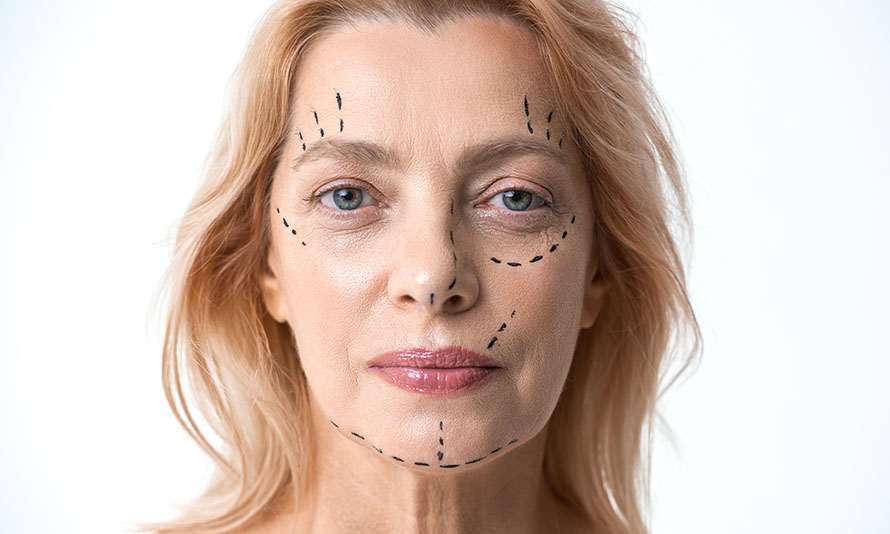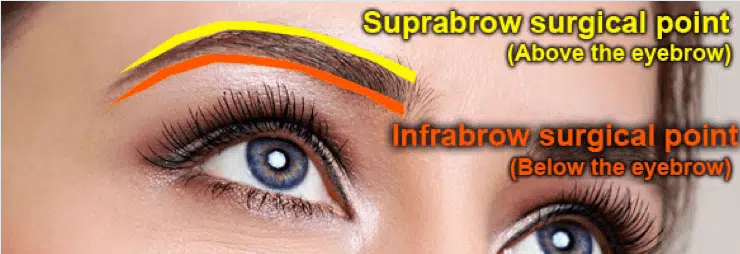Journal
What Are the Different Types of Facelift Surgeries in Korea?
2024-01-15
Anti-aging

What Are the Different Types of Facelift Surgeries in Korea?
In cosmetic surgery, facelifts have long been revered for their transformative power in reversing the signs of aging. As the demand for facial rejuvenation continues to rise, three distinct facelift procedures have emerged as key players in restoring youthfulness: the Upper Facelift, Mid Facelift, and Lower/Neck Facelift. In this comprehensive guide, we will explain the intricacies of each procedure, exploring their unique approaches, benefits, and considerations.
Upper Facelift – Forehead Lift
The Upper facelift, often referred to as a brow lift or forehead lift, primarily targets the upper third of the face. This procedure addresses sagging eyebrows, forehead lines, and drooping eyelids, which are common signs of aging in this facial region. Factors such as aging, sun exposure, and genetics can play a role in the loss of skin elasticity, leading to sagging and wrinkles. The upper facelift addresses these concerns by removing excess skin, repositioning tissues, and smoothing out wrinkles, resulting in a more youthful appearance.
1. Forehead Lift/Brow Lift:
The primary procedure of an upper facelift is the forehead lift surgery, which targets sagging eyebrows and forehead skin. The terms forehead lift and brow lift are often used interchangeably, but there is a difference between brow lift and sub brow lift/supra brow lift. The forehead lift/brow lift is a minimally invasive surgical procedure to improve the saggy forehead, eyebrows, and upper eyelid. This procedure is done by making small incisions on the hairlines above the forehead and using Endotine, an FDA-certified device, to lift and fixate the skin tissues.

2. Sub brow and supra brow lift:
The sub-brow and supra-brow lifts are often confused with a brow lift, but there is quite a difference. These surgeries are lifting procedures for the eyes. The procedures improve heavy-looking eyes for those with thick, saggy skin that covers their double eyelids. As we age, the eyebrows start to droop down. With incisions right below or above the eyebrow, the skin is pulled and tightened to improve sagging eyes and create a fresher image.

Mid Face Lift
The mid-face lift, also known as cheek lift, concentrates the middle third of the face from the bottom of the eyes to the tip of the nose. The targeted areas are the lower eyelid wrinkles and loose skin, Indian bands, saggy cheeks, and nasolabial folds (smile lines). The procedure is done by making an incision right on the lower eyelid lash line. Endotine is used to lift and fixate the skin, tissues, and fascial plane vertically upwards, resulting in a more youthful and rejuvenated appearance.

Lower/Neck Facelift
The Lower/Neck Facelift, often referred to as a MACS lift (Minimal Access Cranial Suspension), targets the lower third of the face and the neck area. This procedure is renowned for addressing sagging jowls, cheeks, nasolabial folds, marionette lines (lines under mouth corner), undefined jawline, double chin, and turkey neck. While there are other methods of improving these areas, such as fillers, lasers, or thread lifts, the MACS lift is the most effective and permanent solution as it directly lifts the skin, muscle, and SMAS (Superficial Muscular Aponeurotic System) layer.
The procedure process starts with a thin incision made behind the hairline, front, and behind the ear, depending on the case. The surgeon will place the incisions right on the line along the ear so that it is less noticeable. After lifting, the surgeon will remove excess and saggy skin, resulting in effective and long-lasting results.

Commonality Across Facelift Procedures
While each facelift procedure focuses on a specific region of the face, some commonalities thread through all three, contributing to their overall success and patient satisfaction.
Patient Consultation and Customization
Before any facelift procedure, a thorough consultation with the surgeon is essential. This involves a comprehensive discussion of the patient's goals, expectations, medical history, and an examination of facial anatomy. The surgeon then tailors the procedure to meet the unique needs of each individual, ensuring a customized approach that delivers natural-looking results.
Anesthesia and Incision Placement
Facelift procedures are typically performed under general anesthesia or intravenous sedation, ensuring patient comfort throughout the surgery. Incision placement is a crucial consideration, with surgeons strategically choosing locations to minimize visible scarring. Common incision sites include within the hairline, around the ears, and sometimes under the chin.
Addressing Multiple Signs of Aging
While each facelift procedure targets specific areas of the face, they collectively address multiple signs of aging. These may include sagging skin, deep wrinkles, loss of volume, and changes in facial contours. The comprehensive nature of facelift surgeries allows for holistic rejuvenation, producing harmonious and natural-looking results.
Differentiating Factors and Considerations
Targeted Areas of Improvement
The Upper, Mid, and Lower/Neck Facelifts differ in their areas of focus, allowing patients to choose procedures based on their specific concerns and desired outcomes. While the Upper Facelift targets the forehead and upper eyelids, the Mid Facelift concentrates on the middle third of the face, and the Lower/Neck Facelift addresses the lower face and neck.
Degree of Invasiveness
The invasiveness of each facelift procedure varies. While the Upper Facelift and Mid Facelift may involve less extensive surgery and shorter recovery periods, the Lower/Neck Facelift, with its emphasis on the lower face and neck, may require a slightly more involved surgical process.
Age and Timing Considerations
The timing of when to undergo a facelift is a personal decision influenced by various factors, including age and individual aging patterns. Some individuals may opt for a specific facelift procedure earlier in life to address genetic predispositions, while others may choose a combination of facelifts later to comprehensively address aging concerns.
When considering the pursuit of a more youthful appearance through facial rejuvenation, upper, mid, and lower/neck facelifts stand at the top, offering solutions to address the distinct regions of the face. As individuals navigate the decision to undergo a facelift, the wealth of options and meticulous expertise offered by Korean surgeons underscores the transformative potential of these procedures, ultimately empowering individuals to embrace a more youthful and confident version of themselves.
Back


